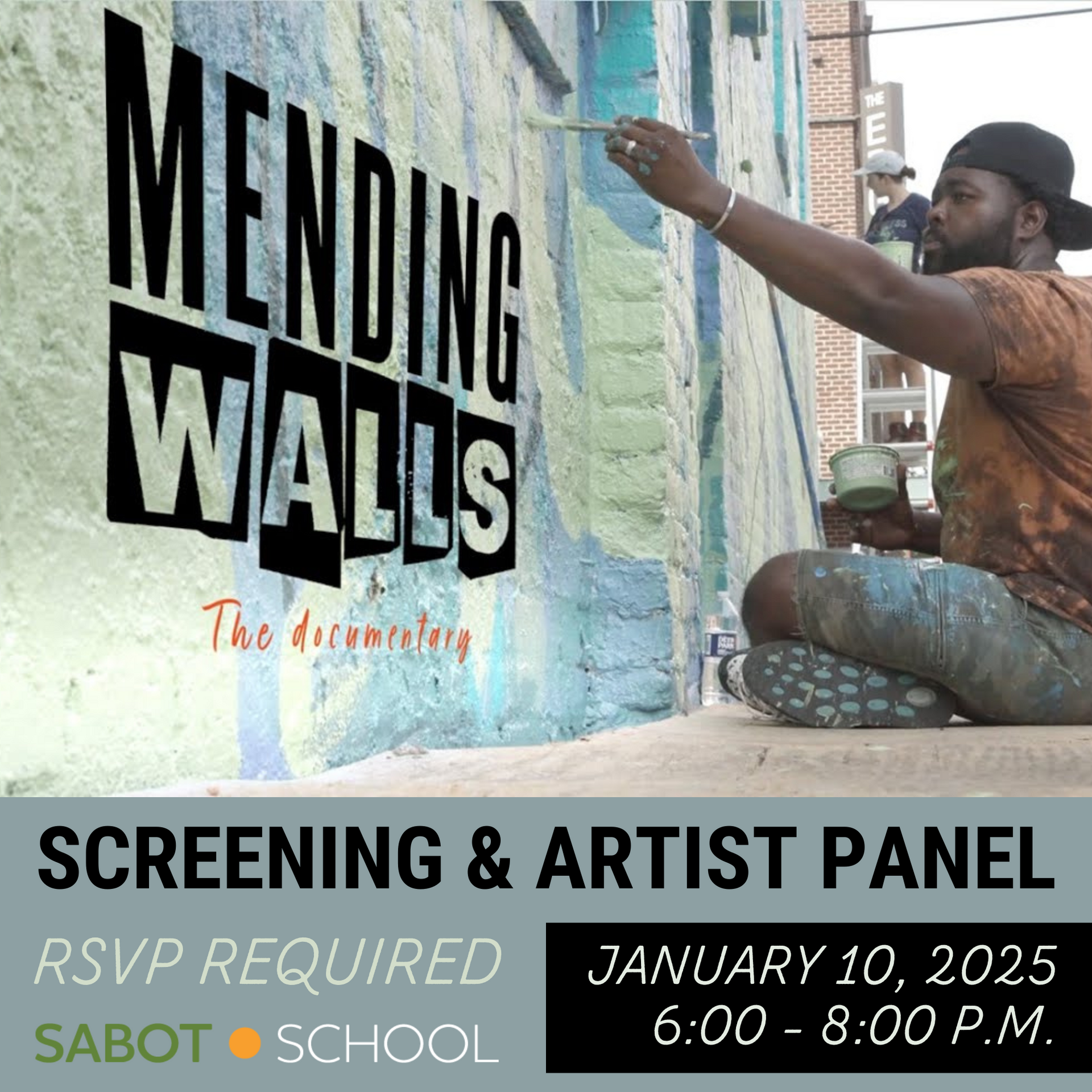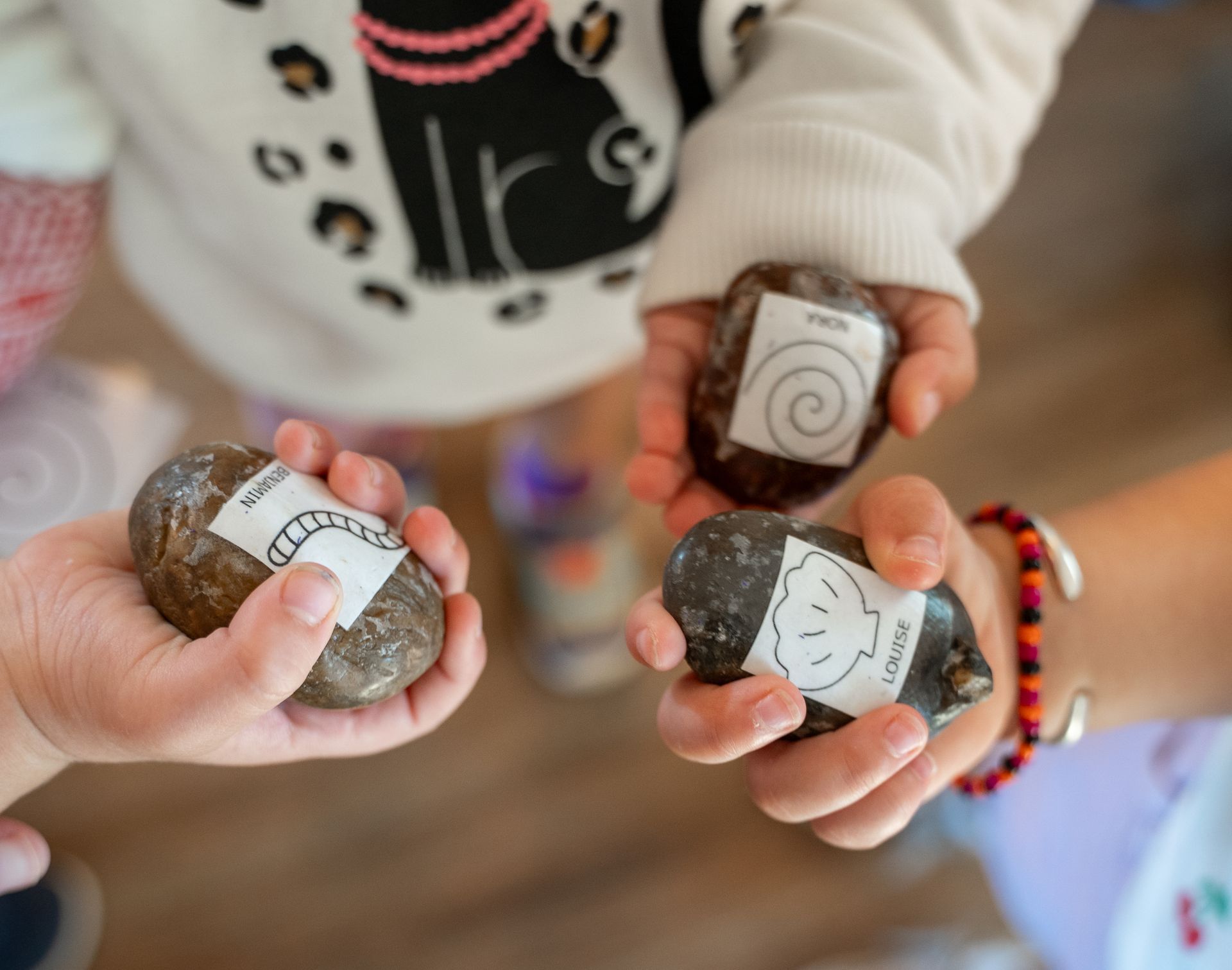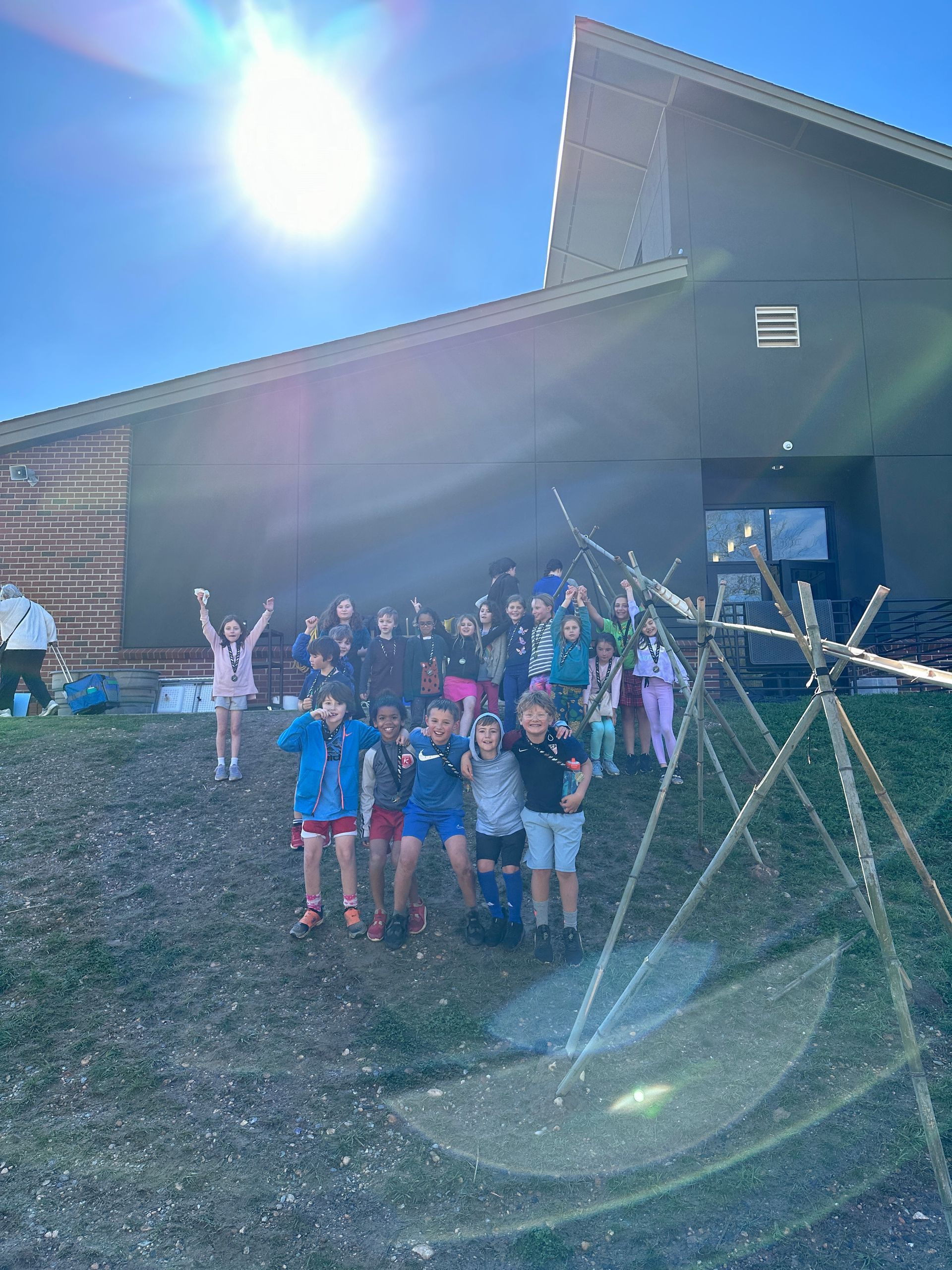Inch By Inch
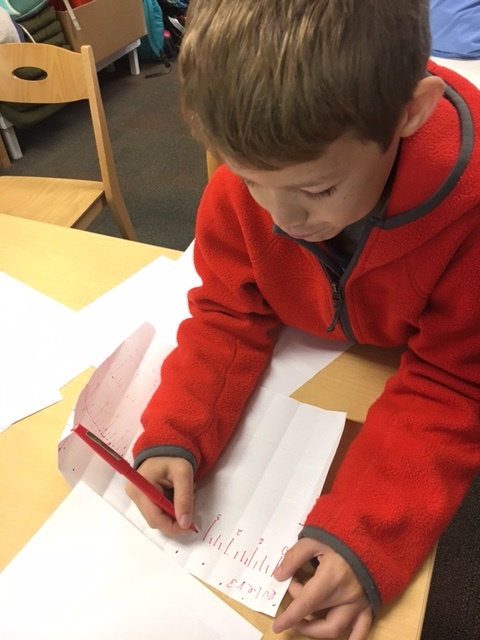

How hard is it to make your own ruler?
PROVOCATION: We estimated lengths – things that are about an inch, a foot, a yard, a mile. These are personal references, quick and relatively easy ways to estimate the lengths of objects by comparing them to other objects whose length is known (a paper clip is about an inch , an adult shoe is about a foot long). In our math workshop conversations, the children said that a sheet of paper is about a foot long, so we asked them to try making their own twelve-inch rulers with a simple sheet of paper, using what they already know about inches , without looking at a “real” classroom ruler for guidance. They then set themselves to this task with thinking pens and blank sheets of copy paper (which were only 11 inches long, unbeknownst to them). We asked them to be sure to put their names on their rulers and number their tries.
DAY ONE: FREE-HAND ATTEMPTS AT MAKING A RULER (with 11 inch long paper)
- Juliette: This is so hard! [ Laughing… ]
- Xander: This is pointless!
- Robbie: How do you make them [the inches] all the same size? It’s 100% impossible to have two things the exact same size!
- Xander: It will always be an atom off…
Hailey kept making rulers that ended at 12 near the edge of the paper, but not all the way to the edge of the paper. Knowing that a ruler has to be 12 inches, she decided to simply cut off the bit of paper at the end to make it 12 inches [literally making a short cut]. Many children saw that their concept of inch kept shifting as they noticed the variety of inch lengths they were producing. Even if they got all the way to twelve at the edge of their paper, they could see that some of their inches were bigger (or smaller) than others.





Some children tried using their digits – which they think are close to an inch – to try making their rulers, laying their fingers carefully across the page. After several attempts to make a ruler, Gabriella and Juliet expressed ideas that related back to an understanding of standardization:
- Gabriella: I wonder if the paper really is 12 inches long.
- Juliet: Or maybe it’s less than 12 inches…
- Robbie: I don’t actually believe this is one foot.
This initial process required a lot of patience and persistence. Several tries were made by each student as they strove to create a “more exact” ruler. While other students seemed frustrated, Alexander kept making ruler after ruler without giving up. “I don’t back down from a task that easily. I’m on my fourth ruler now,” he calmly stated. “You need to use one of your digits and line them up to make an inch. For rulers #1 and #2, I used millimeters and inches. Now I’m just doing inches.” Alexander wasn’t the only child who was using and confusing metric and customary systems of measurement in these first tries, but as they kept working, these children came to this realization, on their own and in conversation with their classmates, and reverted to working solely in inches.
Is there flexibility in an inch?
In looking at the students’ ruler making, we noticed that many of them weren’t iterating units – perhaps they don’t quite believe the whole notion of iteration. In teaching measurement, they have heard (and have remembered) over the years that there should be no gaps, no overlaps, but it appears that they haven’t been convinced of the standardization of unit length and iteration. We assume they get it, but this experience is showing us otherwise – and that some of them are a bit confused about the two systems of measurement. Metric and customary systems are both used for measuring the same things, so it’s not completely illogical for some children to try a “mash up” ruler as a way to understand equivalencies.
DAY TWO: FREE-HAND ATTEMPTS AT MAKING A RULER (with 12 inch long paper)
On the second day, we revealed to the students that the paper they had used the day before was not a foot long – it was merely eleven inches long. There were several jubilant cries of “I knew it!” We then supplied them with 12 inch long paper to try again.
The paper we used today was exactly twelve inches long. Did knowing that make creating your ruler any easier?
Reese: Yes, because I knew it would be [12 inches] all the way across


Can you make your own inch?
- Max H: It would be easier if you had a piece of paper that you measure first that is the size of an inch and then use that.
- Alexander: First you get a 12 inch piece of paper and an 11 inch piece of paper. Then when you line them up, they will be an inch apart from it and then cut off the difference between them and you get an inch piece and once you do it then you put it on the paper and measure it like that and then it’s done.
- Neil: Me and Max we used the paper and cut out an inch and Max at the end of it realized that we were using the little paper. In the end it was eleven inches not twelve. But then I used the inch on the wrong paper, the shorter paper so it should have been 12.
 The boys matched up the 11 inch paper and the 12 inch paper to determine that the “extra” bit of paper sticking over the edge could be their inch. They then cut out their “inch” and began trying to use it to create their next rulers.
The boys matched up the 11 inch paper and the 12 inch paper to determine that the “extra” bit of paper sticking over the edge could be their inch. They then cut out their “inch” and began trying to use it to create their next rulers.
If we all understand something about “inchiness” and rulers, why then is it so hard to draw an inch?
- Max H: It’s hard to draw the exact thing.
- Neil: It’s still hard to memorize.
- Alexander: When we try our methods, nothing is exactly going to be exact because it’s always going to be an atom off, but when you’re trying and you don’t have unlimited materials and you only have pens and paper and scissors…
- Robbie: If you don’t have a ruler, you just have to assume that it’s an inch.
- Lila: If you want to measure something almost exactly, it’s hard to measure something if one inch is this big [shows one length with her fingers] and that big [shows a bigger length]
Why did I ask you to make rulers?
- Max H: [laughing] To make us all miserable.
- Alexander: To see if we actually locked in if we know what a ruler is, because a foot is 12 inches. You wanted to see if you could challenge us to do that.
What happened each time you made another ruler? Did it get better?
- Juliette: I learned that every time I made one, I needed to change the size of the inch until it was the right size.
- Graeme: For my first [ruler], [the inches were] a little bit diagonal. They weren’t straight. My other tries left a little bit of space…On each ruler, the inches were different sizes. In one [ruler] there weren’t enough inches, and in another, there were too many.
- Xander: The first few times I didn’t memorize the exact amount so I just had to keep trying and guess, and then if that fails, you had to keep doing another guess.
- Hailey: It was kind of challenging to get the right inch.
- Max P: I noticed that pretty much every time I made my ruler it would get a bit better.
Why do inches need to be the same size?
- Juliette: Because if they weren’t the same size, then [they] wouldn’t equal the same thing.
- Max H: If one [measurement] was too big and one was too small and one was in the middle, you wouldn’t know which one to measure with.
- Neil: If you made your own ruler and some [inches] were big and some were small…they wouldn’t be the same size.
- Lila: If you don’t have [the inches] the same size, it wouldn’t measure the correct answer.
- Gabriella: Your measurement would be more accurate if your inches are the same size.
- Reese: If you don’t have a ruler, you just have to assume [that some things] are an inch, but otherwise you are supposed to use a ruler because you need a ruler.
DAY THREE: FREE-HAND ATTEMPTS AT MAKING A RULER: FOLDING PAPER METHOD


 Some of you were folding the paper to try and make a ruler and I’m wondering why? It seemed like you thought that this was a good way to make a ruler.
Some of you were folding the paper to try and make a ruler and I’m wondering why? It seemed like you thought that this was a good way to make a ruler.
- Hailey: I feel like it would have been better to guess if [the fold is] the right length.
- Max H: [It was] pointless because every time I folded the paper, I got ten [folds/inches].
- Neil: The first time I got 11 [folds], then the next time I got 11. And then the next time 11, then 11, then 10, and then 12.
- Gabriella: If I got twelve of the folds and they were all the same length then I could make the lines. I guessed.
- Juliet: I guessed that [one inch was] one fold.
- Lila: I had to do eight rulers to get to 12 [inches].I probably just folded [the paper] the right amount.
Why might folding be a good strategy?
- Robbie: Because if you could get [each fold] folded to the same length it could work out. But it always turned down for me, and I could only get nine folds.
- Max H: So you fold over what would be one inch and then you keep folding it over like this (an accordion).
DAY FOUR: FREE-HAND ATTEMPTS AT MAKING A RULER: USING INCH TILES


The folding method the day before was getting the children closer to an understanding of iteration. If each fold was an inch – or close to an inch – wide, then you could make twelve folds of the same size to develop a twelve inch ruler. Anyone who has ever made an accordion fold with paper knows that this exercise involves a good deal of careful repetition. On the fourth day of ruler making, we decided it was time to give the children inch tiles to help them move forward – with manipulatives that gave them a better semblance of “inchiness.”
Using the inch tiles, do you think creating a ruler will be easier?
- Max H: No it won’t be easier because I’ve already failed so many times.
- Hunter: It will be easier because you have something you know is an inch and if you put it down on a piece of paper and you put the lines on each side.
- Hailey: I think it will be easier because on the side it’s a whole inch and if you look in the middle that’s a half inch.
- Max H: But if you put it on the piece of paper and you put [an outline] next to it, it won’t be an exact inch. It would be a bit over. You would have to put the line exactly under it.
Would it work if you just traced it?
- Neil: No because if you trace it around it will be bigger than an inch.
With the inch tiles, several children “got it” on their first try – and we asked them to go back to their rulers to add in 1/2 and 1/4 marks. Others still had difficulties. Below: even with the inch tiles, there was the challenge of figuring out how to keep them aligned to trace and record the measurements exactly.





Later, some intrepid souls tried their hand at making meters, even trickier as the units are smaller (centimeters and millimeters).


- Max P: I think [a meter] would be more challenging and interesting to draw!
- Skylar disagreed heartily: When we did inches, it took like eight tries for everyone and I think [drawing a meter] would probably take like twenty times.
Robbie, thinking back to our study of Hindu myths and stories, remembered the tale of Ganesha, who was asked by the poet Vyasa to write the Mahabharata with his tusk, a story “so long that no man could ever write the whole thing – all the pens in the world would break when before it was done.” Any attempt to make your own meter stick, Robbie said, “would take so long that all the pens in the world would break…even Ganesha’s tusk would break.”
_________________________________________________________
In processing this lesson with Sabot’s math coach Cat Henney, she directed me to a quote that is particularly apt:
“Motion is a resource for coordinating measure and generation of attributes of length, area, volume, and angle.” [p. 38, Developing Essential Understanding of Geometry and Measurement, Grades 3-8 (2014)]
Regardless of the measurement tool, measurement implies motion – the physical act of taking something and measuring it quantitatively – and so this exploration speaks to the necessity of real physical exploration. An inch is an inch is an inch…which seems irrefutable…but is it? The social learning involved in making your own ruler reveals the subjective nature of such a task. We agree that a foot is a foot, an inch is an inch, but everyone has very flexible ideas based on perceptual judgement. Giving children the opportunity to use what they know in a tangible sense affords them the ability to grapple with measurement conventions in a deeper way. A ruler assumes that you know the transitive property and is loaded with cultural conventions and assumptions. A twelve-inch ruler is a a mutually agreed upon standard, but when you ask someone to draw a ruler, there is no real agreement about actual length (again, the flexibility of an inch). The inch that I draw may not be the inch that you draw, or that someone else draws. The relativity embedded in measurement is so revealing. It is all about perspective of length relative to individual understandings and experiences of length, which then shape our unique personal benchmarks.
That these children could use this experience to think not only about concepts of measurement but exactitude – the need for it and the inherent problems in achieving it – is quite astounding. When you think and work spatially, there is a high level of discourse and engagement. It’s all in the talking-it-out (and figuring-it-out) that these concepts come together. Most children construct unit iteration born of transitive reasoning by fourth grade, but hopefully this purposeful exercise afforded them a “task rich” opportunity to progress to their next stage of understanding.
Striving for accuracy is one of the sixteen habits of mind that Sabot educators work to inculcate in our students, in all grade levels. I asked the children to think about what this habit means to them:
- Max H: Checking something.
- Reese: If you try really hard and you really want to.
- Alexander: You are pushing your way through a lot of stuff to get what you want.
- Gabriella: You need something. You try and get something.
- Skylar: Is that another word for adventure?
- Graeme: Trying your hardest.
- Juliet: Getting something right
- Gabriella: Get something the best you can.
- Juliette: Try the best you can.
- Lila: To be as accurate as possible. As close to, say, perfect as you can get.
- Robert: Having a higher chance of doing it.
- Reese: To be accurate is to get very specific and really close to what you are doing.
So what does striving for accuracy mean?
- Neil: Trying to do your best and trying to increase your skill at everything.
- Alexander: Pushing forward to something that you really want and learning stuff.
- Neil: Accurate is just saying it would be like 20 minus 10. The answer 10 would be accurate. Accurate could be not exact but close.
The striving is in trying to improve your skills, inch by inch…and in so doing, finding new understandings…and questions.
The post Inch By Inch appeared first on Sabot at Stony Point.
SHARE THIS POST
